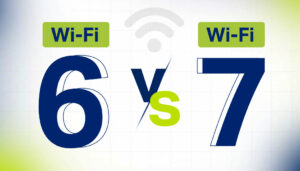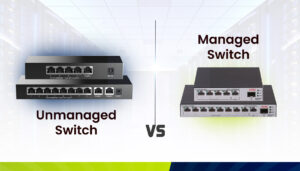Layer 2 vs Layer 3 Switch: The Complete Guide to Choosing the Right Network Switch (2025)
If you’ve ever stood in front of networking equipment wondering whether you need a Layer 2 or Layer 3 switch, you’re not alone. This decision impacts everything from your network’s performance to your budget. Let me break it down in a way that makes sense whether you’re a network engineer or a business owner trying to make an informed decision
Understanding Network Switches: The Foundation
Before diving into layers, let’s establish what a network switch actually does. Think of a switch as a smart traffic controller for your network. Instead of blindly sending data everywhere (like old-fashioned hubs did), switches intelligently direct information only where it needs to go.
The “layer” terminology comes from the OSI (Open Systems Interconnection) model, which is essentially a seven-layer framework that describes how data moves through a network. Don’t worry about memorizing all seven layers. For this discussion, we only need to focus on two: Layer 2 (Data Link Layer) and Layer 3 (Network Layer).
Layer 2 Switches: The Neighborhood Postal Worker
How Layer 2 Switches Work
Imagine a postal worker who only delivers mail within a single neighborhood. They know every house on their route by the house number (not the street address). That’s essentially how a Layer 2 switch operates.
A Layer 2 switch uses MAC (Media Access Control) addresses to direct data. Every network device has a unique MAC address, like a fingerprint. When you connect devices to a Layer 2 switch, it builds a table that maps each MAC address to a specific port. When data arrives, the switch looks at the destination MAC address and forwards it to the correct port.
The “layer” terminology comes from the OSI (Open Systems Interconnection) model, which is essentially a seven-layer framework that describes how data moves through a network. Don’t worry about memorizing all seven layers. For this discussion, we only need to focus on two: Layer 2 (Data Link Layer) and Layer 3 (Network Layer).
The “layer” terminology comes from the OSI (Open Systems Interconnection) model, which is essentially a seven-layer framework that describes how data moves through a network. Don’t worry about memorizing all seven layers. For this discussion, we only need to focus on two: Layer 2 (Data Link Layer) and Layer 3 (Network Layer).
Key Features of Layer 2 Switches
What They Do Well:
- Blazing Fast Performance: Because they only look at MAC addresses, Layer 2 switches process data incredibly quickly. There’s no complex decision-making involved.
- Plug-and-Play Simplicity: Most Layer 2 switches require minimal configuration. Connect your cables, power it on, and you’re running.
- Cost-Effective: These switches are significantly cheaper than their Layer 3 counterparts, making them ideal for budget-conscious deployments.
- VLAN Support: Many Layer 2 switches support VLANs (Virtual Local Area Networks), letting you segment your network into isolated groups even on a single switch.
What They Can't Do:
- No Routing Between Networks: A Layer 2 switch cannot communicate between different IP networks or subnets. If Device A (192.168.1.10) wants to talk to Device B (192.168.2.10), a Layer 2 switch can’t help.
- Single Broadcast Domain: All devices connected to a Layer 2 switch receive broadcast messages, which can create network congestion as your network grows.
- Limited Traffic Management: They lack advanced features like routing protocols, Quality of Service (QoS) prioritization, and sophisticated access controls.
- Plug-and-Play Simplicity: Most Layer 2 switches require minimal configuration. Connect your cables, power it on, and you’re running.
- Cost-Effective: These switches are significantly cheaper than their Layer 3 counterparts, making them ideal for budget-conscious deployments.
- VLAN Support: Many Layer 2 switches support VLANs (Virtual Local Area Networks), letting you segment your network into isolated groups even on a single switch.
Real-World Layer 2 Use Cases
Perfect For:
- Small offices with 5-50 employees on a single network
- Home networks and small business LANs
- Connecting devices within the same department
- Extending network ports in a single subnet
- Access layer in a larger hierarchical network
Example Scenario: A small dental office with 15 computers, 3 printers, and 2 servers all on the same 192.168.1.0/24 network. A Layer 2 switch handles this beautifully at minimal cost.
Layer 3 Switches: The Regional Distribution Center
How Layer 3 Switches Work
Now imagine a regional distribution center that routes packages between multiple neighborhoods, cities, and even states. They look at full addresses (street, city, zip code) to make routing decisions. That’s a Layer 3 switch.
A Layer 3 switch does everything a Layer 2 switch does, but it can also route traffic between different IP networks using IP addresses. It’s essentially a switch and router combined in one device, though optimized for switching.
How Layer 3 Switches Work
What They Offer:
- Inter-VLAN Routing: The game-changer. Connect multiple VLANs and allow them to communicate without needing a separate router.
- Routing Protocols: Support for OSPF, EIGRP, BGP, and static routing to intelligently direct traffic across networks.
- Enhanced Security: Access Control Lists (ACLs) let you control exactly which traffic is allowed between networks.
- Quality of Service (QoS): Prioritize critical traffic like VoIP calls or video conferences over less time-sensitive data.
- Higher Port Density: Often available with more ports and higher throughput capabilities.
- Reduced Latency: By eliminating the need for an external router, Layer 3 switches can reduce the number of hops data takes, improving performance.
The Trade-offs:
- Higher Cost: Typically 2-5 times more expensive than comparable Layer 2 switches.
- Complexity: Require more configuration knowledge and ongoing management.
- Slight Performance Overhead: Processing IP routing adds minimal latency compared to pure Layer 2 switching, though modern switches minimize this.
A Layer 3 switch does everything a Layer 2 switch does, but it can also route traffic between different IP networks using IP addresses. It’s essentially a switch and router combined in one device, though optimized for switching.
Real-World Layer 3 Use Cases
Perfect For:
- Medium to large businesses with multiple departments
- Networks with multiple subnets or VLANs
- Organizations requiring advanced security policies
- Environments with high-traffic applications needing QoS
- Data centers and server farms
- Campus networks connecting multiple buildings
Example Scenario: A company with 200 employees across five departments (Finance, HR, Engineering, Sales, Operations). Each department is on its own VLAN for security and traffic management. A Layer 3 switch allows Finance to access shared servers while preventing them from accessing Engineering’s development servers.
The Decision Matrix: Which Switch Do You Need?
Choose a Layer 2 Switch If:
✅ Your entire network uses a single subnet
✅ You have fewer than 50 devices
✅ Budget is a primary concern
✅ You don’t need to isolate traffic between departments
✅ You already have a router handling inter-network traffic
✅ Your network is simple and unlikely to grow significantly
✅ Speed within a single network is your only concern
Choose a Layer 3 Switch If:
✅ You have multiple VLANs or subnets
✅ You need to control traffic flow between different network segments
✅ You’re building a network that will scale beyond 100 devices
✅ Security isolation between departments is important
✅ You need advanced features like QoS or dynamic routing
✅ You want to eliminate single points of failure with redundant routing
✅ You’re designing a data center or server infrastructure


